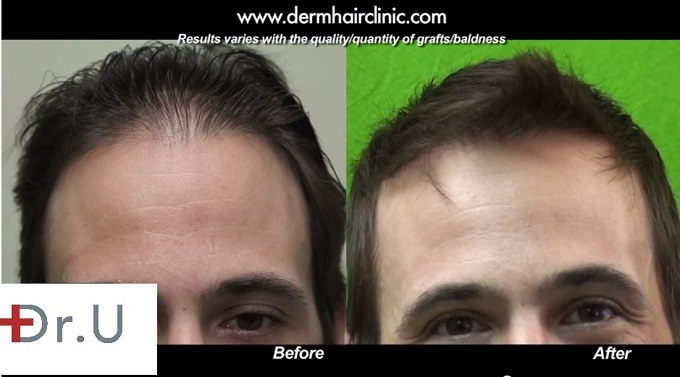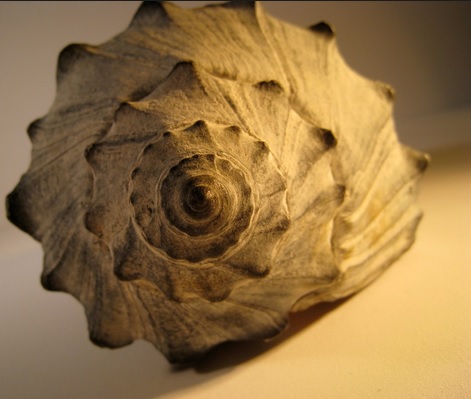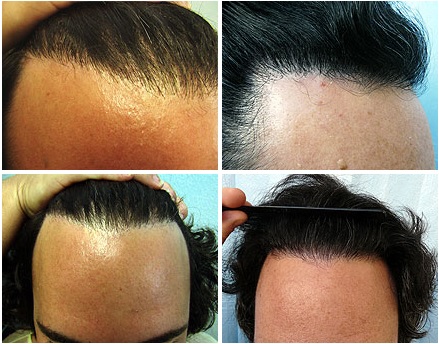The face is one of the first aspects of appearance that other people notice. The hairline frames the face proportionally. When hair loss occurs at the hairline, distortion occurs of the face. A receding hairline makes the forehead look larger, throwing the entire balance of the face off. A hairline hair transplantation using UGraft follicular unit extraction (FUE) restores the hairline and proportion of the face.
Nuance of the Hairline Hair Transplantation
The hairline is defined by where the bare skin of the forehead begins and scalp hair begins. It is the natural point where the flat forehead curves to form the horizontal plane of scalp, then curves around both sides of the face. The temple points form the temporal recesses. Both hair loss and genetics can alter this natural shape.
Since both Rogaine and Propecia are ineffective at the hairline, a hairline hair transplantation is the main solution for a receding hairline. A surgeon harvests donor hair from the scalp and replaces them in areas of loss. In some cases using UGraft tools, beard, body or leg hair may be used for a body to head transplant (BHT). BHT is an advanced method of hair transplantation based on FUE. It is highly effective for hairline restoration.
Surgeons must take into consideration:
- Hair Caliber
- Shape
- Density
- Position
Position and Shape of the Hairline
The Rule of Thirds, also known as the Golden Ratio, is the first point of symmetrical guidance for a hairline. When not effected by hair loss or thinning, the hairline is positioned above the eyebrows, which is equivalent to the midway point between eyebrows and chin. This is the ideal, which very people have, so a surgeon should use it as a guideline and tailor the approach to each individual.
Temple recesses must also be considered for reconstructing a hairline in hair restoration. The angle transition between forward- and backward-pointing hair must be accurate from the hairline to temple hair. If not done properly, appearance is subpar and unnatural.
Hairlines fit the shape of individual facial skeletal anatomy. They vary immensely based on the initial symmetry of a person’s face. Mild asymmetry is common but is usually not detectable to others. hairline Hair transplantation surgery should mimic natural customization for a natural appearance.

Patient’s Transformation Due to Hairline hair transplantation Hairline Hair Transplantation: Density and Hair Caliber
Density of hair at the hairline also varies between individuals. Surgeons must decide placement of the follicles based on natural occurrence. Surgeons must also decide whether to place in a straight line or more of a zigzag pattern.
For hairline hair transplantation, surgeons need to determine the donor hair source. Typically hair is used from the mid-rear scalp. This hair thickest in texture but using it may cause too harsh of a hairline. Using UGraft, finer hair, such as nape hair, is used from other parts of the body to create a softer, more gradual hairline.
Different ethnicity also have varying degrees of hair texture and thickness. Dr. Umar has addressed these issues in hair transplantation with advanced forms of FUE and BHT. Dr. Umar’s use of leg and other body hair in such procedures appears in many media and research outlets, including The Archives of Dermatology, The New York Times and MSNBC.

Related articles:

